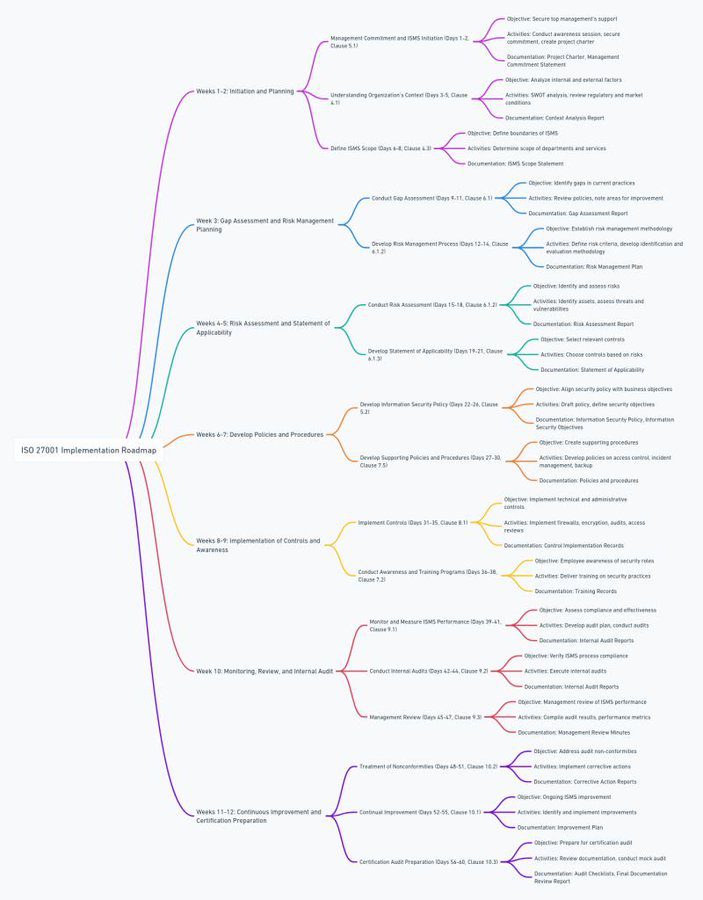Understanding ISO 27001 Compliance
ISO 27001 is an international standard for managing information security. It provides a framework for establishing, implementing, maintaining, and continually improving an information security management system (ISMS). The increasing need for robust cybersecurity solutions, particularly those aiding in ISO 27001 compliance, is expected to drive market demand for the featured software tools. Businesses looking for ISO 27001 compliance solutions, particularly SaaS companies, can benefit from the growing demand for robust security frameworks and ISO 27001 compliance software. For more details, you can refer to the 6 Best ISO 27001 Compliance Software in 2024.
Automation in ISO 27001 Compliance
Automation is a key feature of many ISO 27001 compliance software solutions. These tools help organizations streamline their compliance processes, reduce manual effort, and ensure continuous monitoring and improvement of their ISMS. The integration of artificial intelligence (AI) and machine learning (ML) in these tools further enhances their capabilities, enabling automated risk assessments, threat detection, and incident response. This is particularly important in the context of increasing cyber threats, which highlight the need for ISO 27001 compliance. For more insights on mitigating risks, you can read Mitigating Risk in Linux: Strategies for IT Compliance.
Continuous Threat Exposure Management
Continuous Threat Exposure Management (CTEM) is a proactive approach to cybersecurity that adopts an attacker’s perspective to identify and manage vulnerabilities. This approach is crucial for organizations aiming to stay ahead of evolving cyber threats. The launch of NSFOCUS CTEM aims to provide organizations with a more robust and proactive approach to cybersecurity risk management, potentially impacting the cybersecurity market and influencing how businesses address evolving threats. For more information, you can refer to Elevate Your Risk Management Strategy with NSFOCUS CTEM.
End-of-Life Software and Cybersecurity Risks
The end of life for applications often marks the beginning of life for hackers. End-of-life software poses significant cybersecurity risks as it no longer receives updates or patches, making it vulnerable to exploitation. This article highlights the increasing cybersecurity risks associated with end-of-life software and the challenges CISOs face in securing budget for mitigation. It emphasizes the importance of proactive planning, risk assessment, and communication to address potential vulnerabilities. For more details, you can read Why End of Life for Applications Is the Beginning of Life for Hackers.
Bug Bounty Programs and Crowdsourced Security Testing
Bug bounty programs and crowdsourced security testing platforms like Bugcrowd and HackerOne play a crucial role in identifying and mitigating software vulnerabilities. These platforms connect businesses with security researchers and ethical hackers who help identify and resolve security issues. Bugcrowd, for instance, has a large pool of skilled hackers and offers comprehensive services, including bug bounty programs, penetration testing, attack surface management, and hacker training. For more information, you can refer to Bugcrowd snaps up $102M for a ‘bug bounty’ security platform that taps 500K+ hackers.
Related Articles
- Security Awareness Explored: A Comprehensive Guide
- Benefits of Combining Manual Testing with Automation Software
- Ahead of the Threat: FBI and Equifax Discuss AI in Cybercrime with Mandiant CEO
- What to Do at a Cyber Security Conference
- The Vulnerability of Cookie-Based Authentication in the Age of AI and Cybersecurity
Looking for Travel Inspiration?
Explore Textify’s AI membership
Need a Chart? Explore the world’s largest Charts database
